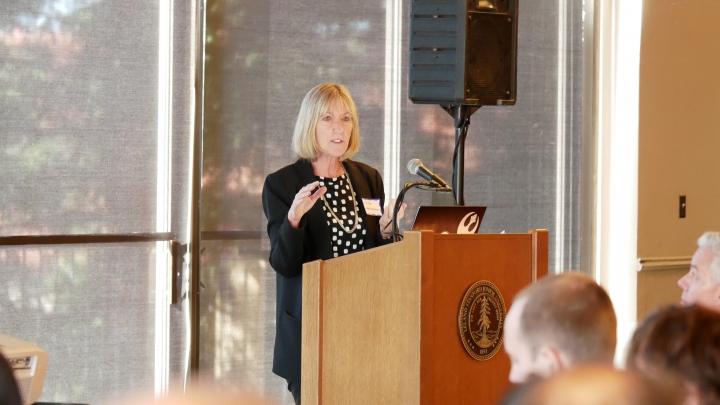On Feb. 10, over 100 IT professionals from organizations across Stanford gathered in person and via Zoom to discuss IT efforts specific to research.
This was the third annual summit held as part of the Campus IT Plan, a collective view of the technology improvement efforts that support the Stanford community. Sponsored by University IT and hosted by Chief Technology Officer of Research Computing Ruth Marinshaw and Director of Research Information Technology and Innovation Zach Chandler, the event inspired and engaged the IT community that supports Stanford’s research mission.
The event provided an opportunity for the IT community to peer out of their silos and understand what is happening across the research community at Stanford, to help identify opportunities for collaboration. This vantage point helped attendees connect the dots on how their work fits into the bigger picture, sparked ideas on how we might work smarter, and helped identify research-related tools that can be leveraged across this community.
Keynotes
Paul Nuyujukian, assistant professor of bioengineering, neurosurgery, and by courtesy, electrical engineering, kicked off the keynote speaker segment by highlighting a story about a former musician with limited mobility due to Lou Gehrig’s disease. Thanks to Stanford’s ingenuity, she was able to play music for the first time in years. By leveraging the use of a brain implant, the Stanford Brain Interfacing Laboratory measured intentional neural activity, and through a decoder algorithm, it allowed her to play over a virtual piano.
This innovative breakthrough in research is part of a Stanford lab that captures data in real-time via a Linux platform.
“Stanford has amazing services for research,” stated Paul, who then described the importance of Stanford’s Sherlock cluster of servers in supporting that research.
Paul gave a nutshell version of the entire research process and the types of systems and technology that support each stage, which illustrated the complex ecosystem our research community is working within.
Opportunities he outlined for growth include better integration across all services with SUNet ID authentication and workgroups, and better access to information and support.
“Most faculty don’t know who to ask, or what to ask for, so get in front of them,” stated Paul. Presentations to faculty about available IT resources and best practices can make a big difference in the way the IT community supports research across all of Stanford.
Vanessa Sochat, research software engineer, Ailey Crow, staff scientist for the Deisseroth Lab, and Valerie Meausoone, associate director of research data and strategy for the School of Medicine all presented informative and engaging keynotes. In Ruth’s talk that closed out the keynote segment, she stated, “Research IT is something the campus should invest in. We can and we should do better by our faculty.”
Minute Madness
The minute madness segment gave 41 participants an opportunity to share their IT efforts with colleagues, which prompted many connections with others in the room working on similar projects during the networking time that followed.
Breakout Sessions
To close out the day, breakout sessions allowed participants to dive deep into the following topics:
- Developing and leveraging new data science theory and practice to accelerate research.
- Developing and managing cloud research computing platforms for large-scale data and computing.
- Research workflow/pipeline that SoM TDS has designed on Nero for users to use STARR-OMOP (STAnford medicine Research data Repository - Observational Medical Outcomes Partnership) data.
- Foundations for Semantic Precision: What you say is what you get.
- How do we turn innovative use of commodity IT services into usable recipes for researchers/labs?
- Text and data analyses
In previous years, this annual summit has addressed content and data management as well as the teaching, learning, and student experience. Learn more about the Research Summit by taking a look at the following resources.
Additional Resources
Slide Deck for the Event
Slide Deck from Professor Paul Nuyujukian
Photos of the Event
Video Recap of the Event
Zoom Recording of the Event
Campus IT Plan Webpage


